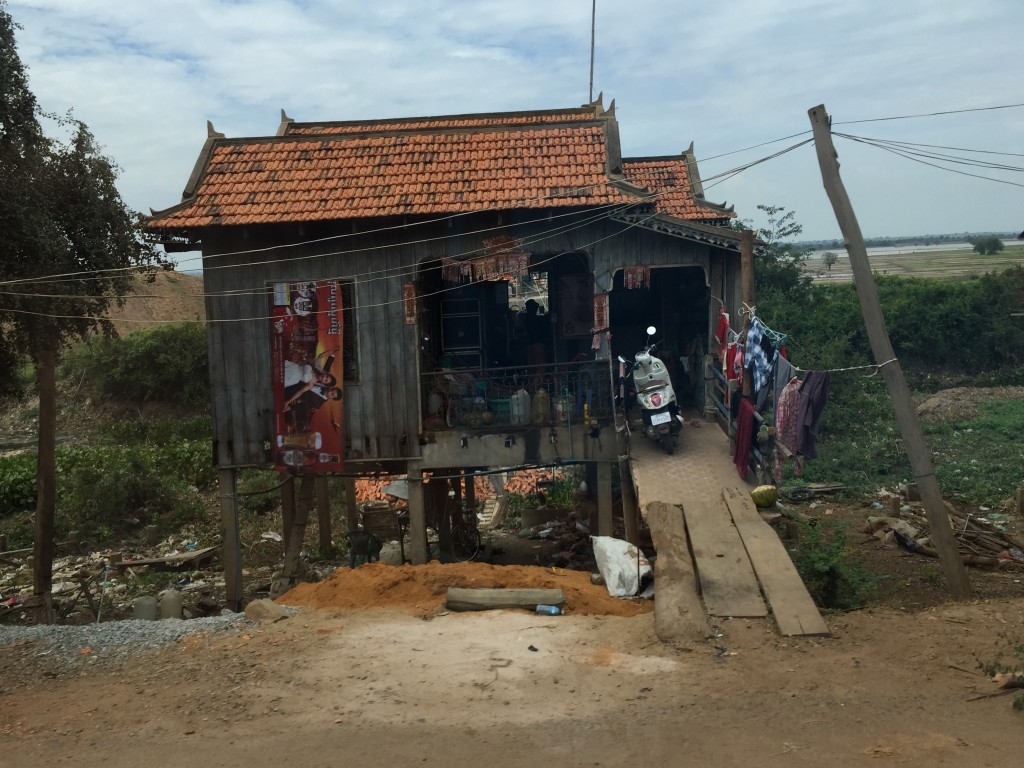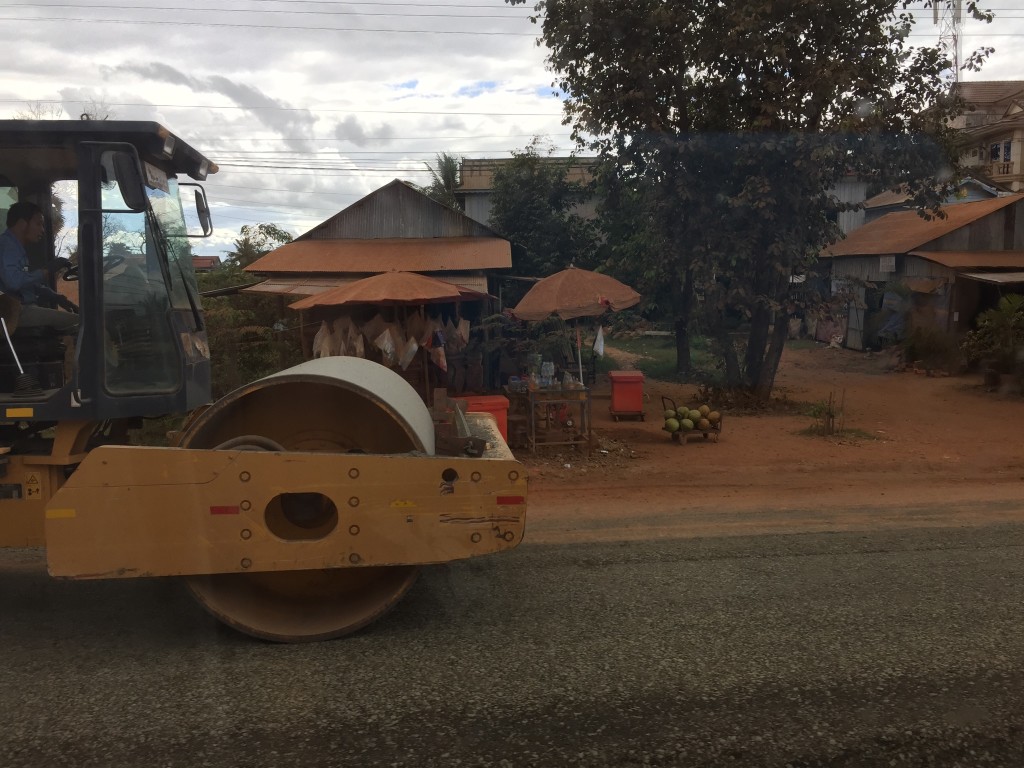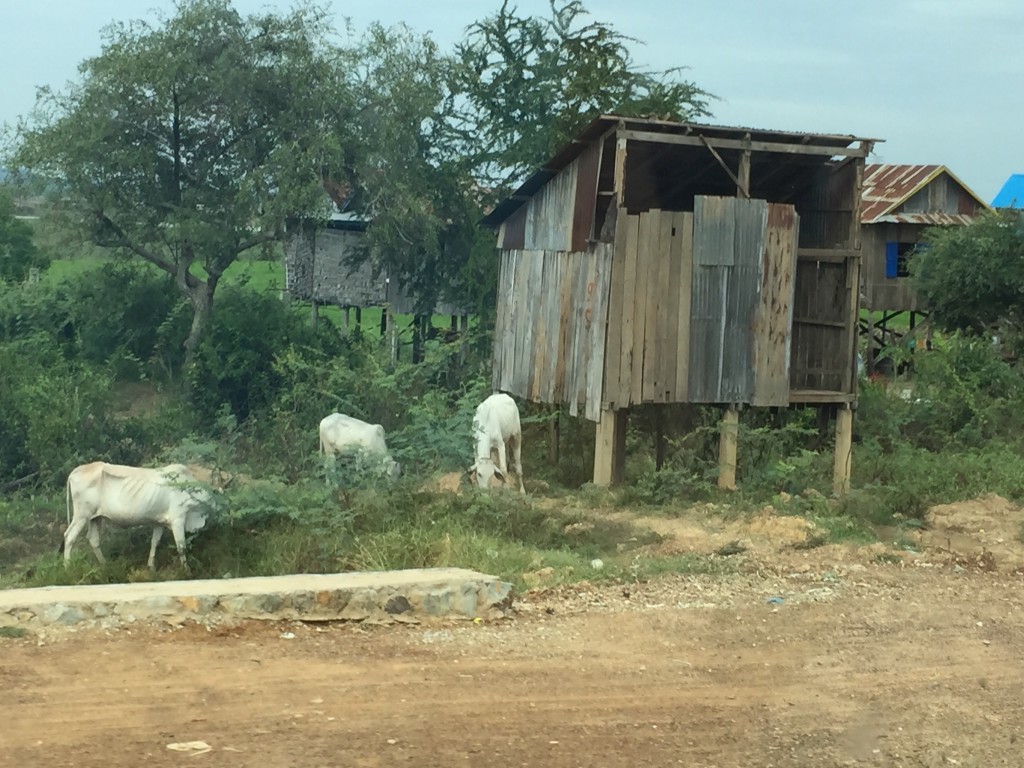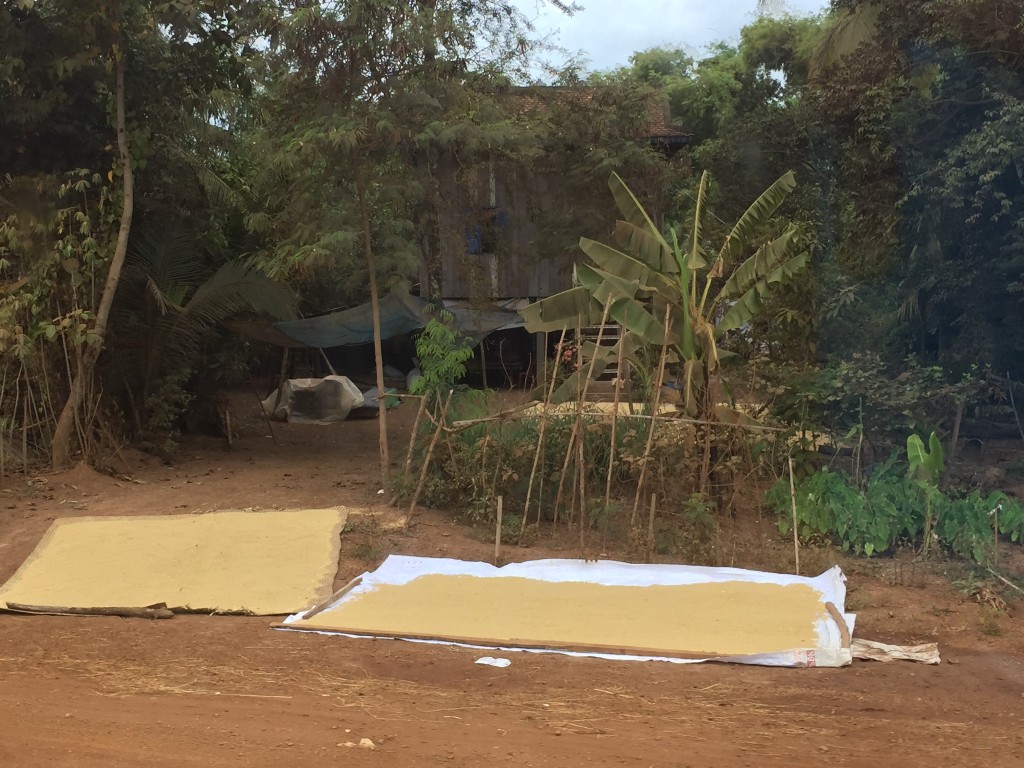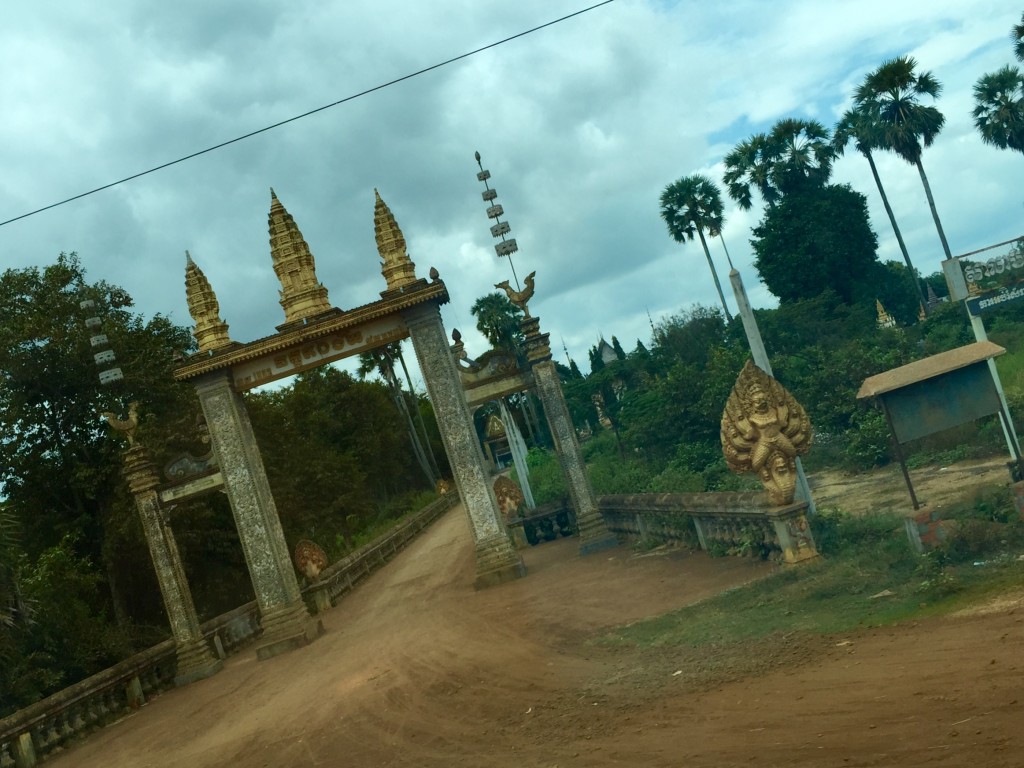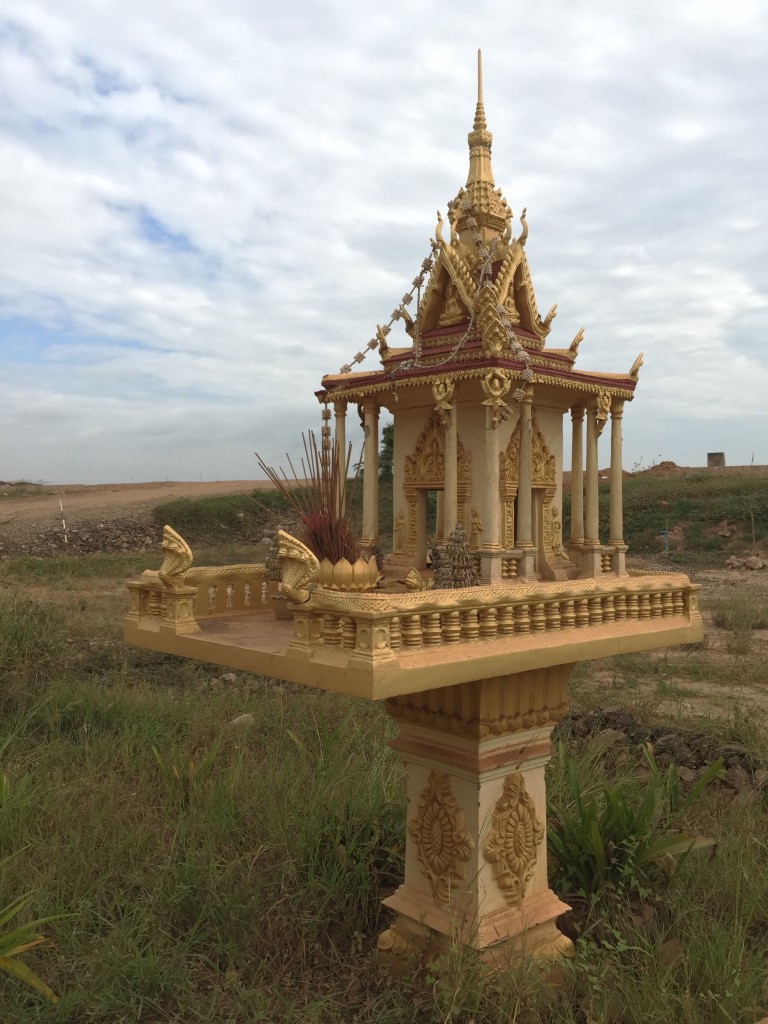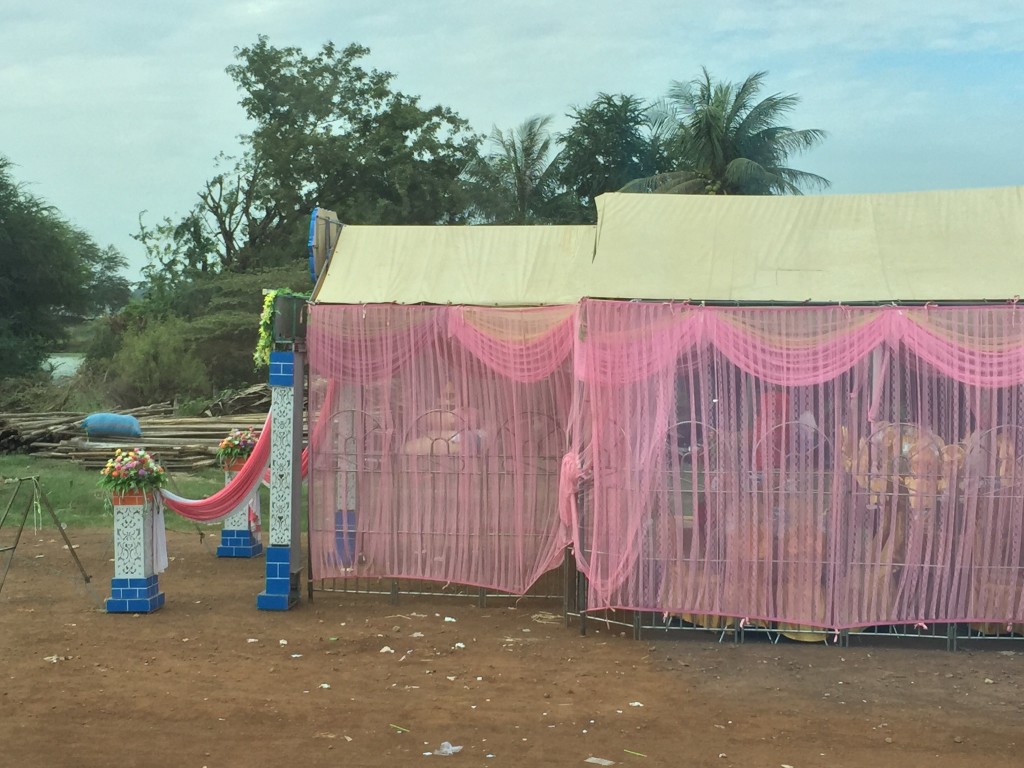There must be at least a dozen bus companies operating between Phnom Penh and Siem Reap offering varying levels of comfort, price, reputation, vehicle size, route frequency, and number of stops. We opted to go with Grand Ibis for their wifi, nice seats at $15 each, and 6-hour trip length. Along the way, we had the opportunity to observe the continuous blend in landscape from Phnom Penh’s mini metropolis to the agricultural countryside.
While leaving Phnom Penh, we got a glimpse of the capital’s supporting industries such as woodcutting, brickmaking, metalworking, bulk goods supply, and pottery. The most advanced manufacturing facilities we saw on the trip were rice processing plants that ran the South Korean Flag. Before the Khmer Rouge were in power, Cambodia was self-sufficient in food and was an established exporter of rice, timber, and other goods; today Cambodia depends on significant foreign investment which prevents it from reaping the benefits of its own natural resources, labor, and even tourism. The most shocking example is the Angkor Wat ticket booth which has been leased to a private Vietnamese company for 99 years. Not a dime you spend on Angkor Wat goes to Cambodians.
From an outsider’s perspective, the obvious areas to improve in a third world country are health, education, and infrastructure at a high level — the rest is speculation until you understand the culture. I have a strong interest in engineering/manufacturing/supply chain/design projects for local development and empowerment, and I expect it would be useful to create a mapped database of development-related resources similar to the World Resources Institute’s global Aqueduct tool for water metrics. For Cambodia, I would note the location, price, and availability of construction materials such as brick, wood, cement, and formed steel as well as the transportation vehicles available, condition of the roads, and perceived level of skilled labor. Such map-based engineering development parameters would be useful for NGO’s, research studies, and disaster relief. Moreover, this online tool could open up synergetic possibilities for humanitarian efforts such as crowd-sourcing data, NGO coordination, and accommodating the incremental contributions of volunteer tourism.
Most shop and home construction consists of corrugated aluminum, brick, and occasional ceramic tile roofing. Aside from temples, the fanciest buildings in town are glass-walled banks with 3D gold-lettered email addresses printed on the facade to market their credibility such as the one on the right. Banks in Palestine boasted similar false fronts.
Most of the road was paved, but some portions were having gravel poured and run over by a steam roller. Everything in the towns was coated with a layer of red dust even though we came at the tail end of the rainy season.
After about an hour, the road transitioned to rural subsistence agriculture communities on cow-dotted landscapes bordered by fish farms and rice paddy fields. Near fields, all houses are built on stilts.
In some townships, each home had a haystack in the yard for cattle feed. The hay was consolidated around wooden poles, sometimes with tires on top.
Some homes dried rice on the roadside to reduce grain moisture before storage. Rice is embedded in Cambodia’s history since the region was first settled in the 3rd millennium BCE by rice farmers migrating from the north. Before the Khmer Rouge rule, Cambodia historically had solid rice harvests, and famines were uncommon.
There are surprisingly few side streets coming off the main highway. When there is a side street or building complex, its entrance is usually marked by a grand arch. This one might be religious because of the symbolism.
Buddhist shrines can be found in front of any kind of building in Cambodia from a city shop to rural residence to pit stop. Most are nearly identical in design and bear a striking resemblance to the royal palace architecture. Some homes had walkways with a specially constructed pedestal extension for the shrines to stand in a place of daily prominence.
We passed by a Cambodian wedding getting set up in a pink tent with speakers blasting pleasant Cambodian karaoke songs. Pink seemed to be the color of choice for other roadside weddings we observed in Siem Reap.

